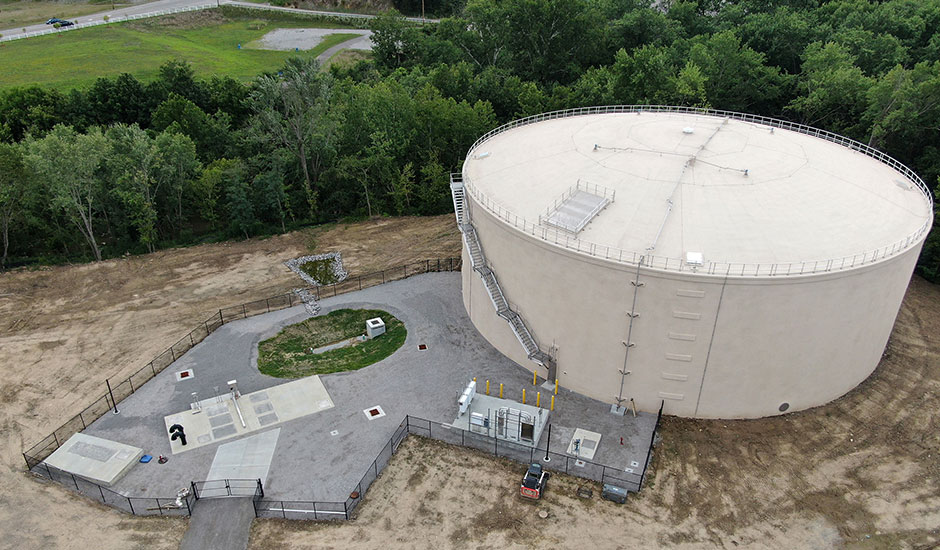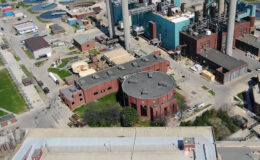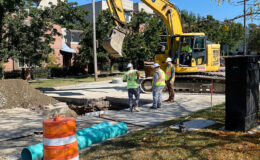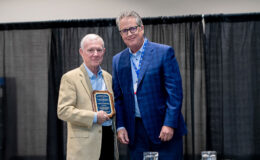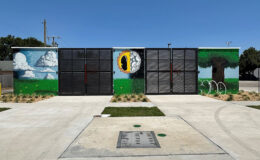Realizing that building bigger infrastructure is not a sustainable or cost-effective solution to increase its wastewater and storm water capacity, Sanitation District No. 1 (SD1) is using a controlled storage approach to better manage sewer overflows in Northern Kentucky. SD1’s amended Consent Decree with the USEPA and Kentucky Energy and Environment Cabinet requires mitigation of sewer overflows by 2040 to better protect public health, property, and the environment. As part of SD1’s Clean H2O40 program, large equalization tanks are being added in strategic areas to store flow during heavy rains and later release it back into the system using real-time controls. These projects include wet weather pump stations to move flows, as well as sewer upgrades. Wade Trim has designed four of SD1’s equalization tanks to eliminate sanitary sewer overflows (SSO) with varied sizes and features to optimize cost and system performance for a typical 2-year storm event.
Designed for use dozens of times per year, AWWA D110 Type III tanks were selected for their durability and low maintenance requirements. These tanks are constructed of steel reinforced pre-cast concrete panels with a steel diaphragm that is spiral wound and installed with a final coat of shotcrete to ensure watertightness. They can be constructed at grade or partially buried, depending on the topography. Common elements to all projects include a domed roof to minimize odor, high flow rate wet weather pump station, stand-by diesel generators, automated cleaning systems, and provisions for future upgrades.
SD1’s first two equalization tanks were completed along Route 8 in Highland Heights and Silver Grove to address sanitary sewer areas that experienced high levels of inflow and infiltration during wet weather events that historically led to surcharging, flooding, and SSO. With a combined capacity of 3 million gallons (MG), the two tanks eliminated 21 MG of typical-year SSO. The storage system has a “pump in” and “gravity out” arrangement with automated facility controls. During wet weather events, excessive sewage flow is diverted from adjacent sewers and into the new wet weather pump station where it is lifted into the concrete tanks. After the event is over, the stored sanitary sewage drains slowly by gravity back into the sewer for treatment downstream at the Dry Creek WRRF.
A third equalization tank, built along the Licking River in Wilder, has been in operation for more than a year as the first phase of a project to eliminate the Licking River Siphon, SD1’s largest SSO location. The 7.3-MG tank, wet weather pump station, and discharge control valve chamber were designed to eliminate 5 MG of typical-year SSO and allow SD1 to control how and when wastewater flows are reintroduced into the sewer system, reducing the need for a larger siphon. The site was designed to be compatible with Wilder’s future use of the area for parking and recreational trails. In addition, 1,800 LF of upstream sanitary sewer from Route 9 to the tank location was upsized as part of this project.
Currently under design, the fourth equalization tank will be built near Madison Pike (KY 17) in Covington to reduce SSO that enters the Banklick Sewershed during wet weather events. The project includes a 3.9-MG tank, wet weather pump station, discharge control valve chamber, diversion structure, and gravity sewer upsizing. Construction is anticipated to be complete in 2025.

